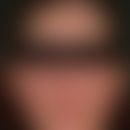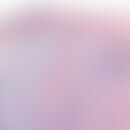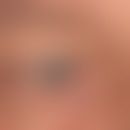General informationThis section has been translated automatically.
Experience in the external and internal treatment of ichthyoses is generally based on the knowledge and experience of experts. Complicating the development of new therapies is the fact that conducting controlled trials is difficult or impossible given the rarity of severe ichthyoses in particular (the diseases often involve only single family strains). A wide range of treatment options is available for the external therapy of ichthyosis.
ImplementationThis section has been translated automatically.
Balneotherapy: From the general health aspect, ichthyosis rehabilitation measures are recommended at specialized rehabilitation clinics, where the possibility of balneotherapy or occupational therapy is offered. Regular, even multiple, daily bathing is also recommended in daily care. This cleanses the skin, loosens scales and removes ointment residues. At the same time, the skin is hydrated. When bathing in pure water (if necessary with a commercial foam bath), cleansing, hydration and softening of the keratoses can take place to a sufficient extent. As a complementary, direct pre-treatment to the bath, a short stay (5 - 15 minutes) in a temperature-regulated steam bath or steam shower is recommended for intensive hydration and softening of the keratosis (Küster W 2006). Important. The danger of overheating of the ichthyotic organism due to the frequently reduced sweating ability must be taken into account (Küster W2006).
Nourishing bath additives: Examples of nourishing bath additives are oil emulsions, spreading oils and a variety of so-called "secret tips" such as bran, sugar beet syrup, whey, etc..The indication of the different bath additives is based on the respective skin condition with the individual needs for refatting or keratolysis. Oils can also be applied directly to damp skin after bathing.
Salt baths: Cooking or sea salt baths promote hydration and keratolysis. However, in erythrodermic ichthyoses, Comèl-Netherton syndrome, and ichthyoses with erosive areas may cause burning sensations. This limits these treatment options. In most other forms of ichthyosis, the burning sensation stops after a short period of acclimatization. A slow increase of the salt concentration from 1 to 8% is possible. Remark: When using higher salt concentrations, beware of corrosion of sanitary metal pipes. For children the salt concentration should not exceed 3 to 4%.
Keratolytic bath additives: To support desquamation, the following bath additives have proved helpful: sodium hydrogen carbonate (Natriumbicarbonicum pulvis, available in pharmacy quality or in the form of baking powder from bakery wholesalers), wheat starch (Amylum tritici), rice starch (Amylum orycae) and corn starch (Amylum maydis). The alkaline property of sodium bicarbonate causes softening and dissolution of keratosis because of the pH increase - presumably due to the increased activity of serine proteases (in adults, about 6 g of sodium bicarbonate per liter of bath water, i.e., about 3 - 4 handfuls (about 400 g) of sodium bicarbonate per bath tub are necessary to sufficiently support keratolysis. According to AMF recommendations, this therapy is usually recommended after the first year of life at the earliest. For infants, it is recommended to halve the concentration to about 3 g/liter. For simplification, commercially available baking soda can be used instead of sodium hydrogen carbonate (Küster W 2006; Milstone LM et al. 2010).
Mechanical keratolysis: After a softening bath (for about 10-20 minutes) or directly after pretreatment in a steam bath, horny deposits can also be removed mechanically. This can be done with various tools under gentle, rubbing pressure. Repeated rewetting of the skin is recommended. For mechanical keratolysis, products such as pumice stones, artificial stones, special "rough cloths", also sponges, or washing gloves with different levels of roughness have proven effective. Microfiber cloths in different qualities are available for sensitive areas (DDG/AWMF Guideline S1). The average time required for a whole-body therapy in a severely affected, already well-controlled ichthyosis patient is 60-90 minutes (Küster W 2006).
Externals: The balneotherapeutic measures should be followed by a refatting local therapy to maintain the hydration achieved by the bath. Additional keratolytic ingredients of the ointments have a complementary effect to the mechanical keratolysis and can counteract further rhagade formation. Externals should be applied at least 1 to 2 times a day, irrespective of balneotherapeutic measures. If necessary, individual areas must be retreated several times a day. With regard to commercially available ready-to-use preparations, experience with children with neurodermatitis can be referred to, whereas children with ichthyosis usually require a greasier base/composition.
In infants and toddlers, active ingredient-free topicals should be used due to increased absorption and greater irritability (Wolf G et al. (2009). For them, the frequency of application is 6 to 8 times daily (Traupe H et al. 2007).
Urea/urea: With regard to urea externals, broad clinical experience can be drawn upon. Urea is generally used successfully in a 10% application form (Küster W et al. 1998). Urea reduces epidermal proliferation, has barrier-regenerating, antimicrobial and keratolytic effects, smoothes the skin and promotes the penetration of other active ingredients in a base-dependent manner. Urea can be combined with other active ingredients, such as sodium chloride, lactic acid or vitamin A acid. In children, urea should be used no earlier than the beginning of the 2nd year of life.
Note: In inflammatory and exfoliative ichthyoses, urea applications often cause burning sensations even in low concentrations.
Glycerin: Glycerin smoothes the skin by increasing corneocyte exfoliation (Rawlings A et al 1995). It is miscible with all O/W and amphiphilic bases and can be magisterially formulated. A 5- to 10% preparation is recommended (DDG/AWMF Guideline 2016). The officinal formulations (NRF 11.204) contain 4.25% glycerol and can serve as additional formulation bases.
Sodium chloride: Sodium chloride (NaCl) is a moisturizer because it is hygroscopic. NaCl has a keratolytic effect in concentrations of 5 - 10%, ideal in hydrophilic bases. In magistral formulations, NaCl is often present in crystalline structures of less than optimal quality, which is why they are not popular (Oji V et al. 2009).
Lactic acid: Lactic acid (Acidum lacticum) is a moisturizer and more hygroscopic than glycerin and urea. It reduces keratoses well tolerated in concentrations of 5% in amphiphilic cream bases. Higher concentrations have a more irritating effect and are less recommended (Oji V et al. 2009). Lactic acid should not be used in neonates.
Polyethylene gly col (macrogol 400): Polyethylene glycol (PEG), specifically macrogol 400, is an O/W emulsifier, has a hygroscopic effect and can hydrate the stratum corneum after penetration. Polyethylene glycol (PEG 400) has a hydrating effect without irritative potential and thus mimics mild keratolytic activity. It can be used at 20-30% concentration in amphiphilic bases. In the 1st and 2nd year of life, PEG should rather be avoided because of possible absorption (Jakasa I et al. 2007).
Local ret inoids: Local retinoids (tazarotene, vitamin A acid, and tretinoin) are available in 0.05- to 0.1% specialties and in combination specialties with urea (mostly tretinoin 0.03% with urea 12%) and are freely prescribable in magistral formulations. Local retinoids have a very good antikeratotic effect, but are usually only suitable for localized cornification disorders or stubborn areas such as hands, feet, lower legs and over joints due to the irritative potential. In the case of large-area long-term treatment, the teratogenic potential must be taken into account. As a precaution, not only pregnant women but all women of childbearing age without safe contraception should not be treated with topical retinoids (Gloor M 2000).
Salicylic acid (warning): Salicylic acid (mostly in fatty bases - ointments and oils) decreases intercellular cohesion and thus stratum corneum thickness and has a proteolytic effect. Salicylic acid penetrates the skin barrier, which is disturbed in ichthyosis (especially at acidic pH), is absorbed and can exert systemic effects. Salicylic acid leaves a depot in the horny layer for up to 13 days after the last application. If the skin barrier is disturbed, there is less depot formation but strong absorption, so that toxic effect levels can be measured with repetitive application. Acute toxic effects in children have been observed. In neonates and infants, but also in older children, deaths due to metabolic acidosis within 72 hours have been reported even at concentrations of "only" 3% added salicylic acid. Salicylic acid should therefore not be used as an active ingredient in whole body treatment, even in ichthyosis, despite its good keratolytic properties. The very localized treatment of problem areas in older patients is possible in principle, but is not recommended in the AWMF guidelines (DDG/AWMF guideline 2016).
Hydroxycarboxylic acids(fruit acids): The benefit/risk ratio for the use-hydroxy acids has not been proven with certainty. Several positive reports of experience are available. In inflammatory ichthyoses, the high irritative potential (due to strong keratolytic effects) must be considered, so that according to current experience, the use of alpha-hydroxy acids is not recommended here. Use in the first years of life is not recommended due to lack of safety data (DDG/AWMF Guideline 2016).
VitaminE: Vitamin E 5% is only suitable as an additive in creams if the following instructions are observed: Vitamin E is photoinstable, especially in aqueous solution, which is why an antioxidant (e.g. buthylhydroxytoluene 0.05% or α-tocopherol 0.1%) should always be added. The pH optimum of vitamin E is 4.5-5.
Externals at special localizations: For external therapy, some localization-specific peculiarities have to be considered (Küster W(2006):
- Capillitium: hydrophilic bases such as base cream DAC with keratolytic additives of 5-10% urea pura and/or 5% acidum lacticum (lactic acid) are preferable here. Therapeutic shampoos with e.g. 5% urea pura are also helpful. These should be left on the scalp for at least 5 - 10 minutes and are sufficient for keratolysis in mild cases.
- Facial skin: Care of the facial skin is crucial for the relief of an existing ectropion. Treatment of the sensitive facial skin/eyelids should be based on glycerin-containing, at most low-dose keratolytics (urea pura up to a maximum of 3%) in an O/W base to avoid irritation and folliculitis (DDG/AWMF Guideline 2016). Very often, a purely refatting care without keratolytics is possible. Additives such as panthenolum 5% or vitamin E 5% are well suited.
- Circumscribed keratoses: External therapy can be intensified by occlusive techniques (film dressings) lasting several hours depending on tolerance. Occlusive dressings can be used effectively for adherent keratoses on the neck and nape, e.g., X-linked ichthyosis vulgaris.
Systemic therapies:
- Acitretin is the only approved agent for systemic treatment of ichthyosis. It inhibits keratinization and regulates cellular differentiation. The indication requires attention to the technical information and a weighing of benefits and side effects under the aspect that the underlying genetic disease requires lifelong therapy. In addition to contraindications (teratogenicity of the substance in women), compliance with the necessary controls (laboratory controls and, in the case of long-term use, X-ray controls if necessary) must be taken into account. Even under systemic therapy, intensive, albeit simplified, local therapy is usually still necessary for most ichthyoses.
- The increase of sweating ability can be a decisive argument for the use of acitretin (Haenssle HA et al. 2008). In general, systemic retinoids are more suitable for non-inflammatory forms of ichthyosis. Accordingly, they can be used well for lamellar ichthyosis and XRI, although they can also be used for superficial epidermolytic ichthyosis or KRT10 associated epidermolytic ichthyosis (caution regarding increased blister induction).
- With limitations, acitretin therapy is suitable in Netherton syndrome (increased tendency to dermatitis). The dose of the drug can be increased gradually at the beginning. In the long term, a low maintenance dose is targeted (Vahlquist A et al 2008). For acitretin therapy of lamellar ichthyosis, a dosage up to a maximum of 1 mg/kg body weight is suitable in adults (in superficial epidermolytic ichthyosis or in KRT10 associated epidermolytic ichthyosis, a maximum of 0.5 mg/kg body weight). However, usually lower doses are used for long-term therapy (lamellar ichthyosis 0.5 mg/kg, epidermolytic ichthyosis with keratin 10 mutation 0.2 mg/kg. Note that significant exacerbation may occur with retinoids in epidermolytic ichthyosis with KRT1 mutation.
- In infants with harlequin ichthyosis, administration of acitretin at a dosage of 0.5 mg/kg body weight (maximum 1 mg/kg bw) is recommended. Long-term acitretin therapy in children should be avoided (DDG/AWMF Guideline 2016).
LiteratureThis section has been translated automatically.
- DDG/AWMF guideline (2016) on the diagnosis and therapy of ichthyoses (update) according to guideline conference of 15.12.2011 and revision of 19.06.2016.
- Gloor M (2000) Moisturizers and other agents affecting the stratum corneum. Keratolytic or proteolytic agents and basic ingredients. In: Gloor M, Thoma K, Fluhr J: Dermatological external therapy with special reference to the extemporaneous formulation. 1st ed, Berlin, Heidelberg, New York: Springer 2000: 105-132.
- Haenssle HA et al (2008) Effective treatment of severe thermodysregulation by oral retinoids in a patient with recessive congenital lamellar ichthyosis. Clin Exp Dermatol 33: 578-581.
- Jakasa I et al. (2007) Altered penetration of polyethylene glycols into uninvolved skin of atopic dermatitis patients. J Invest Dermatol 127: 129-134.
- Küster W(2006) Ichthyoses: suggestions for improved therapy. Dt Ärztebl 103: A 1684-1689.
- Küster W et al (1998) Efficacy of urea therapy in children with ichthyosis. A multicenter randomized, placebo-controlled, double-blind, semilateral study. Dermatology 196: 217-22.
- Milstone LM et al (2010) Scaly skin and bath pH: rediscovering baking soda. J Am Acad Dermatol 62: 885-886.
- Oji V et al. (2009) Revised nomenclature and classification of inherited ichthyoses: results of the First Ichthyosis Consensus Conference in Sorèze 2009. J Am Acad Dermatol 63: 607-641.
- Rawlings A et al (1995) The effect of glycerol and humidity on desmosome degradation in stratum corneum. Arch Dermatol Res 287:457-464.
- Traupe H et al. (2007) Treatment of ichthyosis - there is always something you can do! In memoriam: Wolfgang Küster. J Am Acad Dermatol 57: 542-547.
- Vahlquist A et al. (2008) Congenital ichthyosis: an overview of current and emerging therapies. Acta Derm Venereol 88: 4-14.
- Wolf G et al. (2009) Basic dermatologic therapy with hypoallergenic and nontoxic topical preparations in childhood. J Dtsch Dermatol Ges 7: 50-61.



